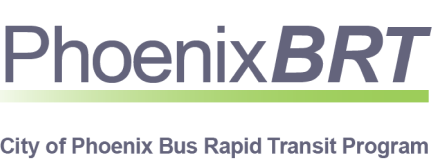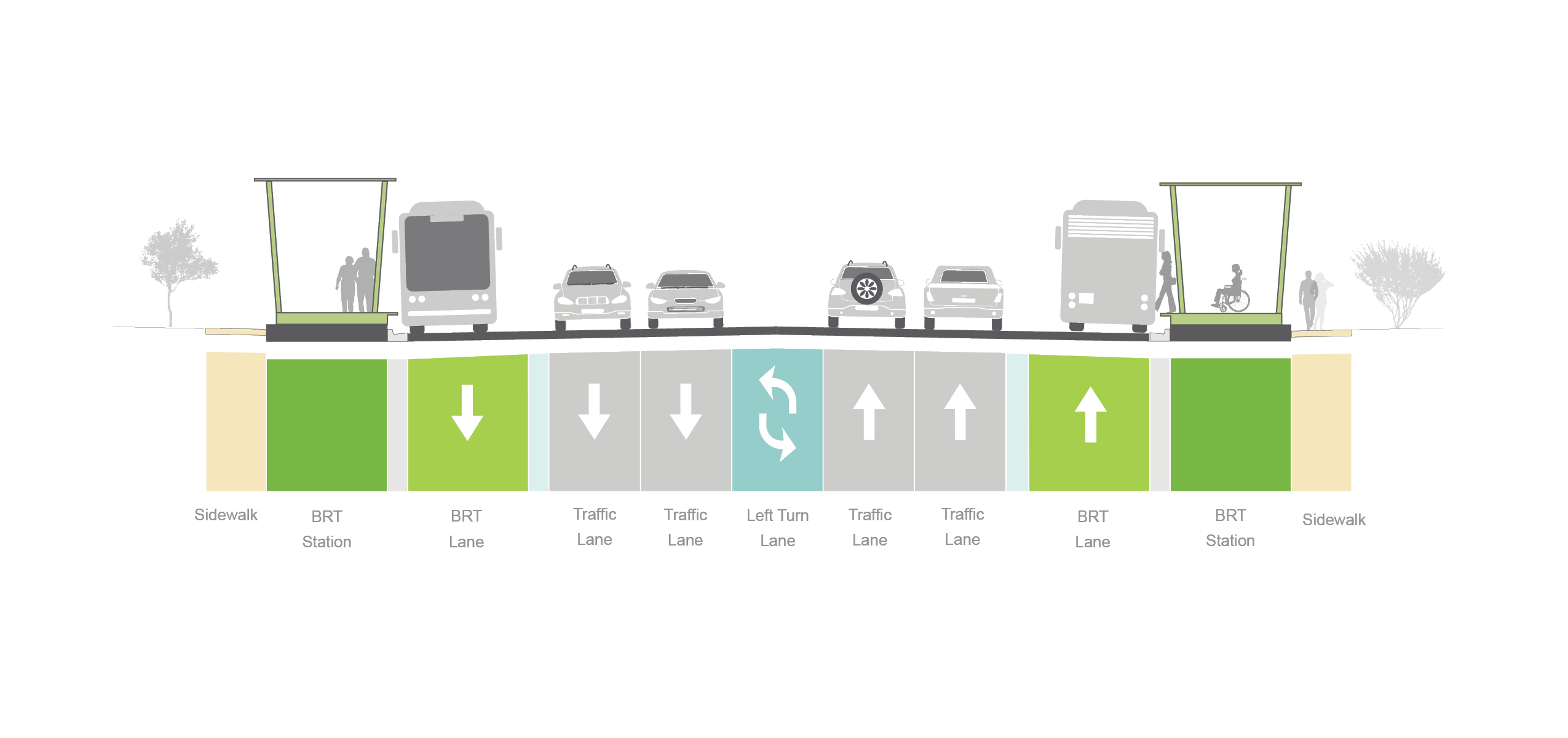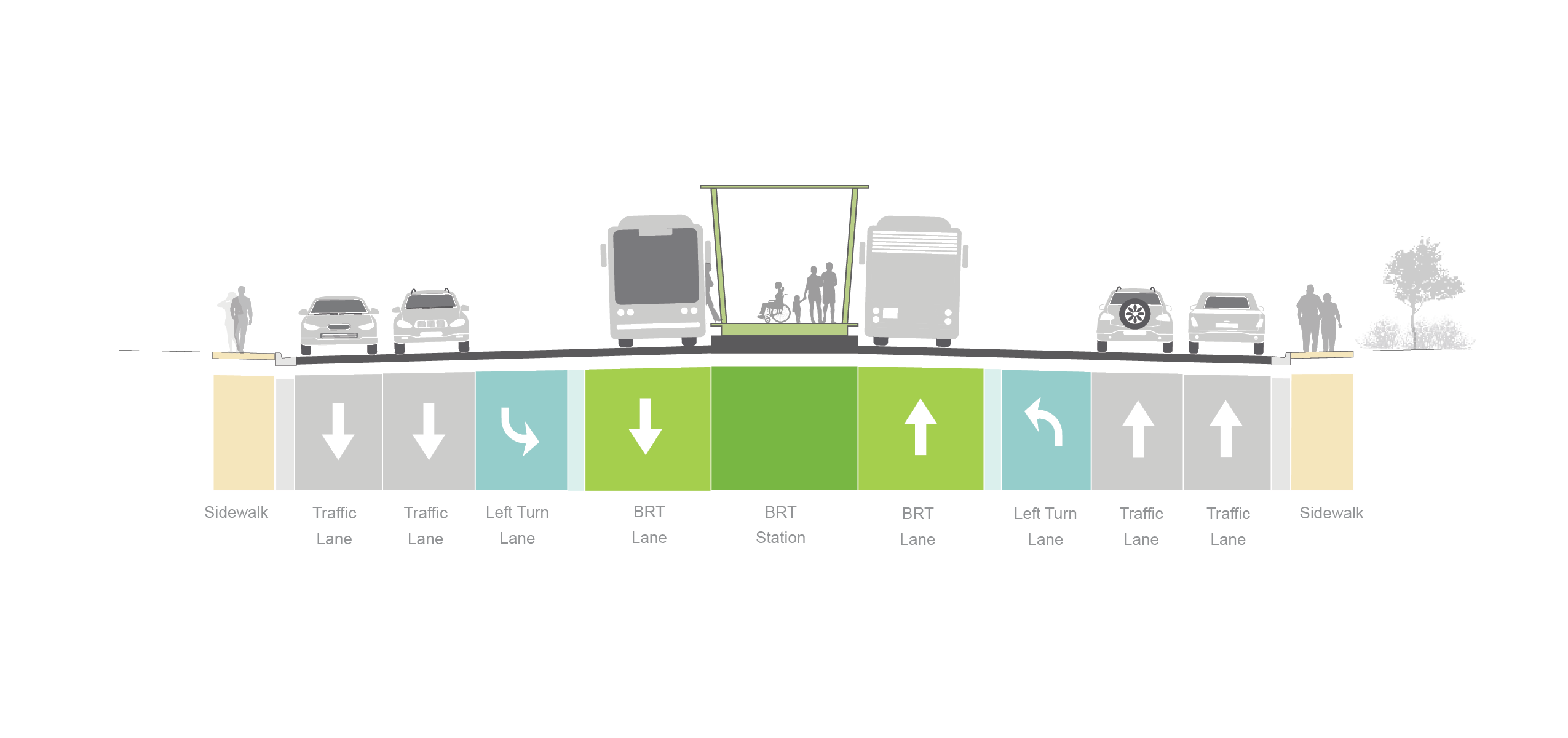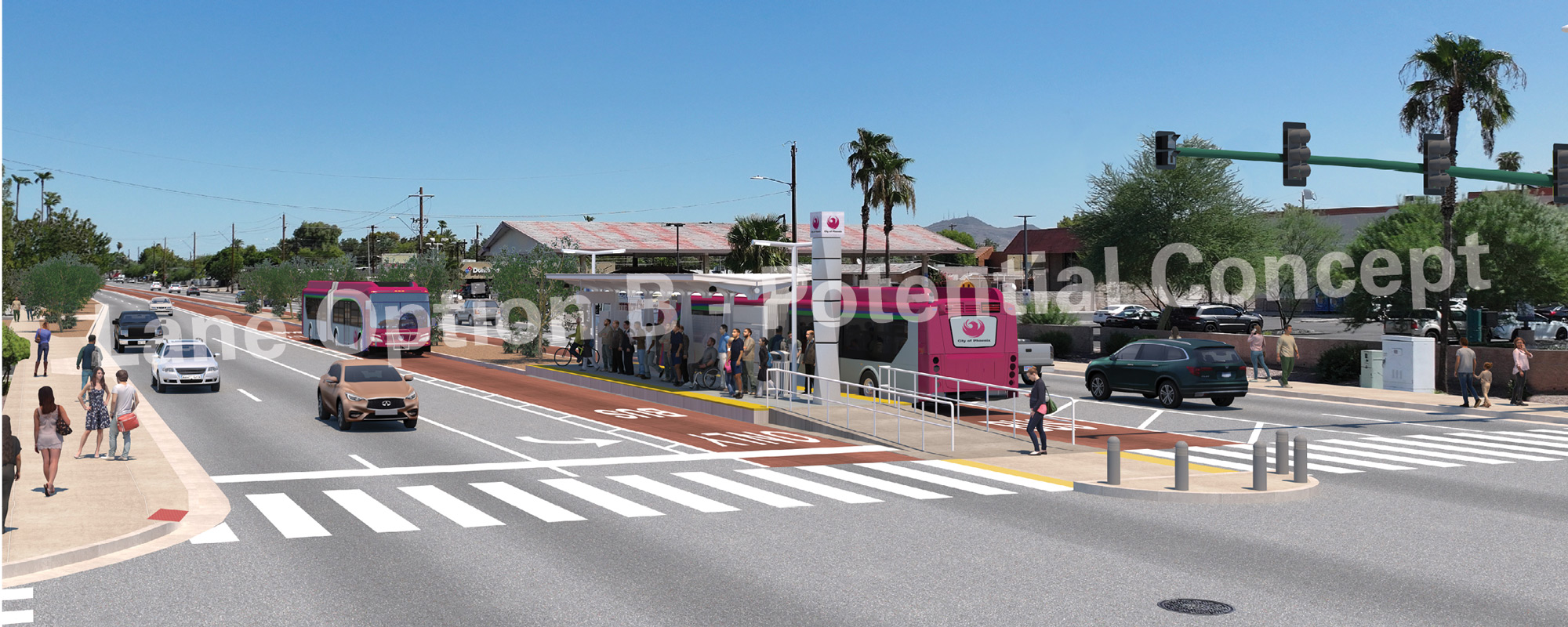BRT 101
BRT - What You Need to Know
Phoenix voters approved Transportation 2050, a 35-year citywide transportation plan, which included Bus Rapid Transit (BRT). BRT is a high-capacity bus service that provides a fast, reliable, and convenient transit experience that’s coming to Phoenix! A BRT system is unique because it can be planned and designed to best meet the needs of the community.
BRT Elements
These elements are commonly found in successful BRT systems and will be included in Phoenix’s first BRT corridor.
Frequent service
Enhanced bus stations
Transit spot improvement
Dedicated lanes
New, larger buses
Level boarding
All door boarding
Enhanced fare collection system
Increased reliability
Overview
The City of Phoenix BRT Program is moving forward!
The first corridor has been selected on 35th Avenue and now we need your input on selecting a BRT lane option. There are two options, one with dedicated bus lanes in the curb lane (side-running) and one with dedicated bus lanes in the center of the road (center-running).
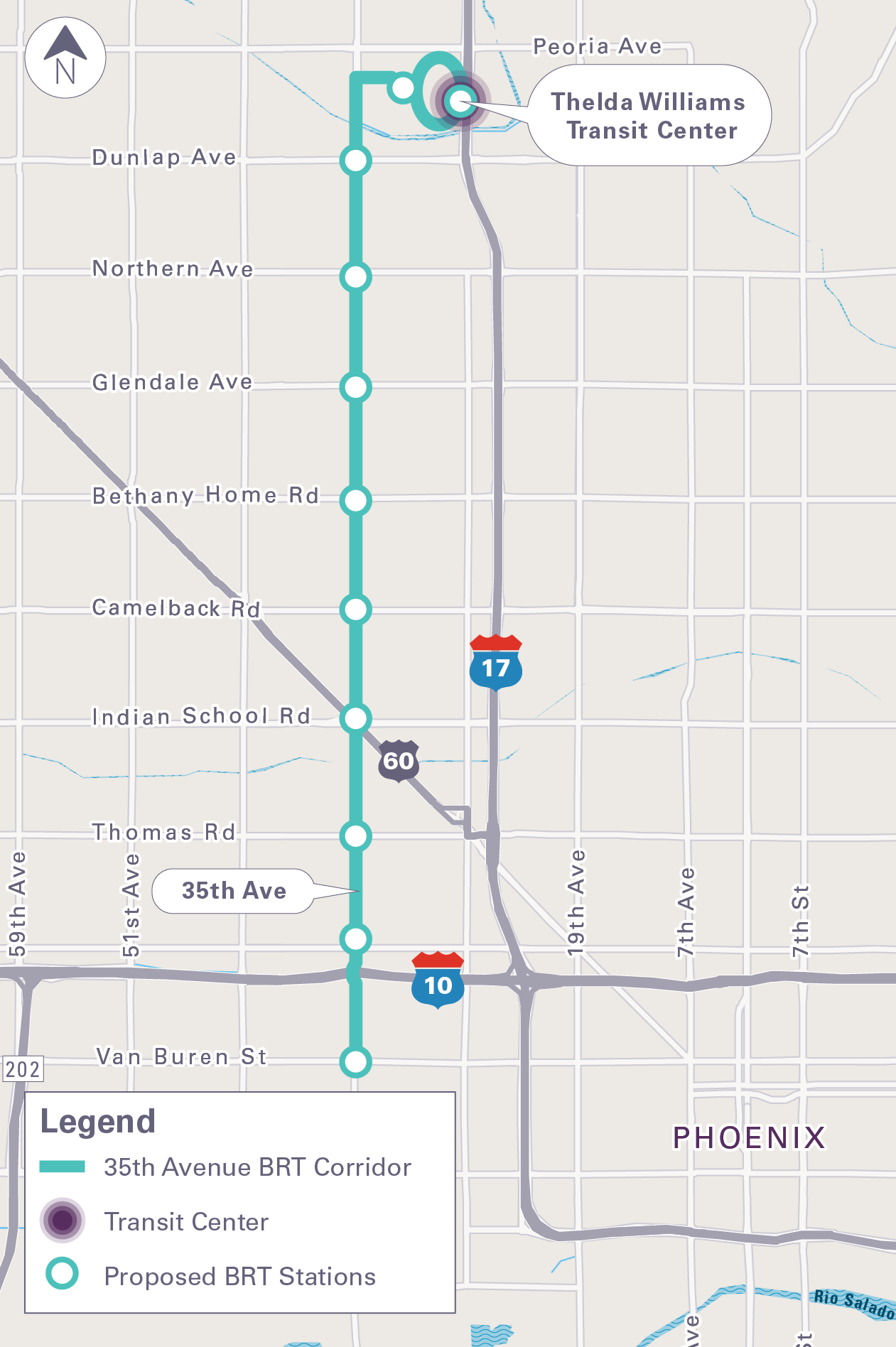
Our Process
Where we are...
In spring 2025, we will be focusing on the 35th Avenue portion of the corridor, finalizing the preferred lane option to continue moving the project forward. At a later date, once the City of Phoenix and Valley Metro light rail teams advance the light rail route and design in the State Capitol area, the BRT team will finalize the design for the remainder of the corridor (the east-west alignment along Van Buren or any other potential east-west street connections).

Lane Option A: Side-Running BRT
Lane configuration for side-running BRT along 35th Avenue at a signalized intersection where BRT stations are proposed.
Considerations
Dedicated BRT Lane Use:
Local
buses can use the BRT lane and general traffic can make
right-turns from the BRT lane
Roadway Width:
Requires more road
width
Pedestrian Access:
Station access
is on the sidewalks, creating longer pedestrian
crossings through intersections
Right-of-Way Impacts:
More
potential right-of-way impacts to residences and
businesses
Travel Time:
Slower travel times
and less reliable due to impacts from right-turning
general traffic and local bus
Left-Turn Movements/Access:
Drivers can make left-turns throughout the
corridor
Lane Option B: Center-Running BRT
Lane configuration for center-running BRT along 35th Avenue at a signalized intersection where BRT stations are proposed.
Considerations
Dedicated BRT Lane Use:
Only BRT
buses are allowed in the BRT lane
Roadway Width:
Requires less road
width
Pedestrian Access:
Station access
is in the center of the road, creating shorter
pedestrian crossings through intersections
Right-of-Way Impacts:
Less
potential right-of-way impacts to residences and
businesses
Travel Time:
Faster travel times
and more reliable due to the elimination of general
traffic impacts
Left-Turn Movements/Access:
Drivers can only make left-turns at signalized
intersections throughout the corridor, due to bus
traveling in the center of the road
Side-Running vs. Center-Running
Lane Option A - Side-Running
Lane Option B - Center-Running
Lane Options
The chart below compares the considerations for each lane option.
| Lane Option A: Side-Running BRT | Lane Option B: Center-Running BRT | |
|---|---|---|
|
|
Local buses can use the BRT lane and general traffic can make right-turns from the BRT lane | Only BRT buses are allowed in the BRT lane |
|
|
Requires more road width | Requires less road width |
|
|
Station access is on the sidewalks, creating longer pedestrian crossings through intersections | Station access is in the center of the road, creating shorter pedestrian crossings through intersections |
|
|
More potential right-of-way impacts to residences and businesses | Less potential right-of-way impacts to residences and businesses |
|
|
Slower travel times and less reliable due to impacts from right-turning general traffic and local bus | Faster travel times and more reliable due to the elimination of general traffic impacts |
|
|
Drivers can make left-turns throughout the corridor | Drivers can only make left-turns at signalized intersections throughout the corridor, due to bus traveling in the center of the road |
